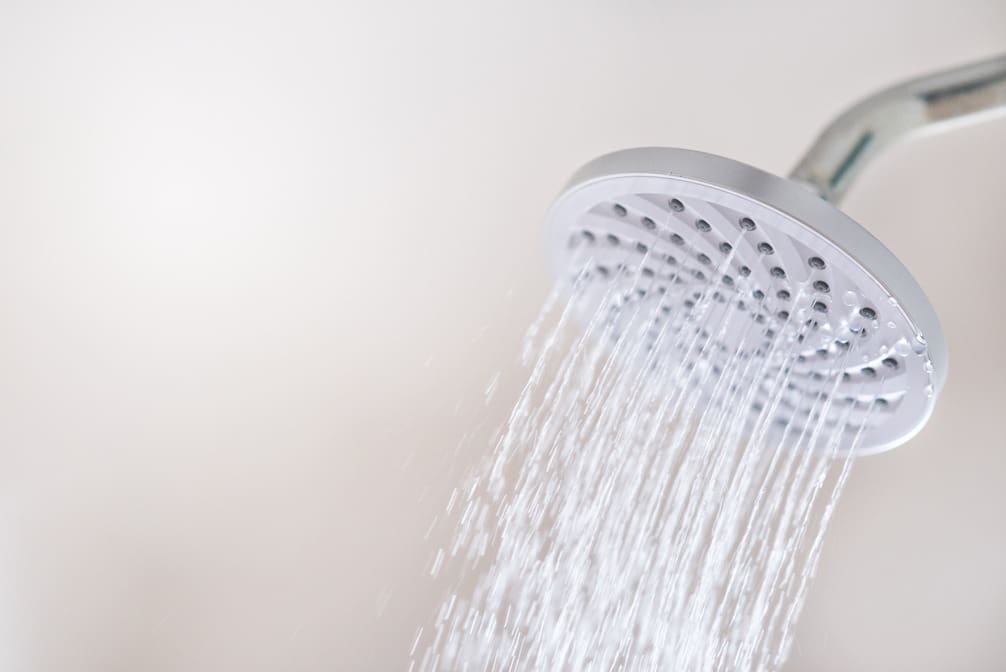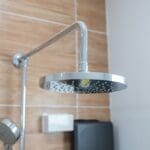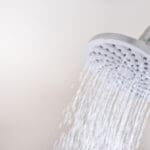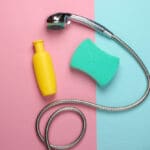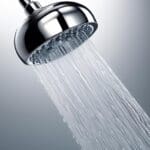Facing a malfunctioning shower head is like stumbling upon an unexpected roadblock on your daily routine. You’re standing there, ready to jumpstart your day, only to find out your shower head’s not cooperating.
Let’s troubleshoot together. A clogged nozzle, perhaps due to mineral buildup, is often the culprit. Soaking it in a heavily distilled white vinegar might just do the trick.
On the other hand, a leaky shower head can signal more complex issues, like faulty seals that might require a professional’s touch.
Low water pressure? That’s another story, possibly tied to mineral deposits or compatibility issues with your plumbing system. Stick around as we unravel these mysteries, offering practical solutions to get your shower back to its former glory, ensuring you won’t have to deal with this hiccup for much longer.
Key Takeaways
- Low water pressure in the shower can be caused by mineral buildup or a faulty water pressure regulator.
- Clogged shower heads can be cleaned with a heavily distilled white vinegar solution or replaced if necessary.
- Leaky shower heads may have worn-out seals or gaskets and can be fixed with heavily distilled white vinegar or professional help.
- Water pressure issues in the shower may be caused by clogged pipes, faulty shower valves, or shared plumbing lines.
Identifying the Problem
Before tackling a non-working shower head, it’s crucial to pinpoint the root cause of the issue. Often, shower head problems stem from low water pressure or a clogged nozzle. If you’re experiencing a trickle instead of a powerful spray, the culprit could be a clogged shower head. Over time, mineral buildup from hard water can block the water flow, making it seem like your shower head’s performance is dwindling.
To diagnose, first examine if the low water pressure affects only the shower or if it’s a household-wide issue. If it’s isolated to the shower, your shower head can become clogged with mineral deposits. Clean your shower head by soaking it in a heavily distilled vinegar solution to dissolve the buildup.
Alternatively, if the water pressure is low throughout your house, check your water pressure regulators. These devices can fail, causing a drop in water pressure that affects all water fixtures, including shower heads.
Fixing Leaky Shower Heads
If your shower head is leaking, it’s likely due to worn-out seals or gaskets that need inspection and replacement. This common issue can lead to low water pressure and increased water bills if not addressed promptly.
First, check for any visible signs of damage or wear on the shower head and the surrounding plumbing. Often, leaky shower heads are the result of clogged passages due to mineral deposits or debris.
To fix this, you can soak the shower head in a cleaning solution or a specialized decalcifying solution. This will help break down the deposits. After soaking, scrub the shower head thoroughly to remove any remaining calcium or limescale. This should restore proper water flow and pressure.
Next, inspect the seals or gaskets within the shower head valve. If they’re damaged, they’ll need to be replaced to prevent water from leaking. If you’re unsure about disassembling the shower head or if the problem persists, it’s wise to call a plumber. A professional can diagnose and fix plumbing problems efficiently, ensuring your shower operates correctly.
Addressing Water Pressure Issues
After addressing leaky shower heads, it’s essential to turn your attention to water pressure issues that can significantly impact your shower experience. If you’re facing low pressure in the shower, it isn’t just frustrating; it’s a clue that something’s not right in your plumbing system.
Here’s a breakdown of common reasons behind water pressure woes and how to tackle them:
- Clogged Pipes: Mineral deposits and debris can cause low pressure by clogging your pipes. If you’ve noticed a gradual decrease in shower pressure, this could be the culprit. Consider a plumbing inspection to identify and resolve clogs.
- Faulty Shower Valve: The shower valve controls the pressure and flow of your shower water. If it’s not working correctly, you’ll experience low pressure. Check the valve and replace it if necessary.
- Pressure Regulator Issues: Some homes have a pressure regulator installed on their main water line. If it’s failing, it can cause low pressure throughout your house, including the shower.
- Shared Plumbing Lines: If your shower shares plumbing lines with other fixtures, heavy simultaneous usage can lead to a decrease in shower pressure. To avoid this, try to schedule your showers at less busy times.
Addressing these issues can restore your shower’s water pressure and enhance your daily routine.
Professional Help and Maintenance
When tackling stubborn or complex shower issues, it’s wise to enlist the help of a professional plumber. Often, problems like persistent low water pressure or drain problems aren’t just about simple fixes and may need a deeper look into your home’s plumbing system. If you’ve tried all DIY methods and still can’t fix the problem, it’s time to call a professional.
A professional plumber can diagnose issues that aren’t immediately apparent, such as problems with the shower valve, water lines, or supply lines. These are common issues that can impact your shower’s performance but may require expertise to identify and resolve. For instance, if adjusting the shut-off valve doesn’t restore water pressure, the issue might lie within obstructed water lines—a problem a professional plumber can fix.
Moreover, regular professional help and maintenance can prevent future problems. Scheduling regular check-ups helps avoid mineral buildup and clogging, ensuring your shower head works efficiently. Consider professional installation of a water pressure regulator if you’re facing ongoing water pressure issues. This proactive approach not only ensures optimal water flow but also safeguards your plumbing system against potential damage, saving you time and money in the long run.

